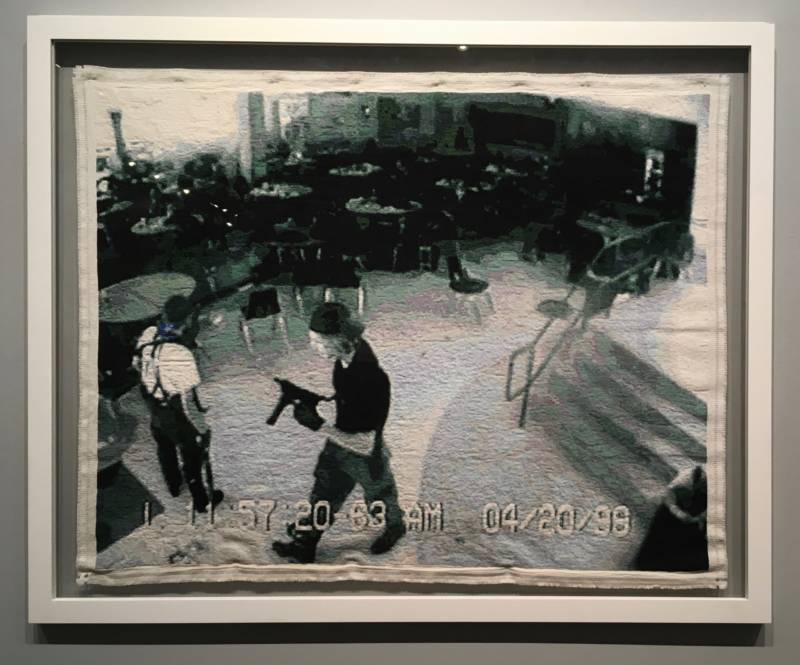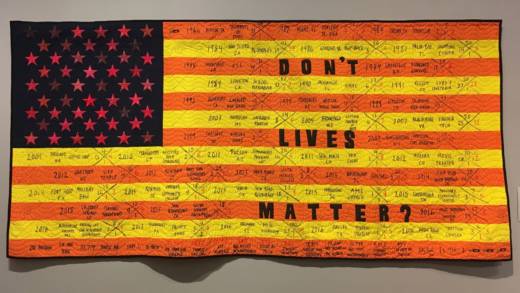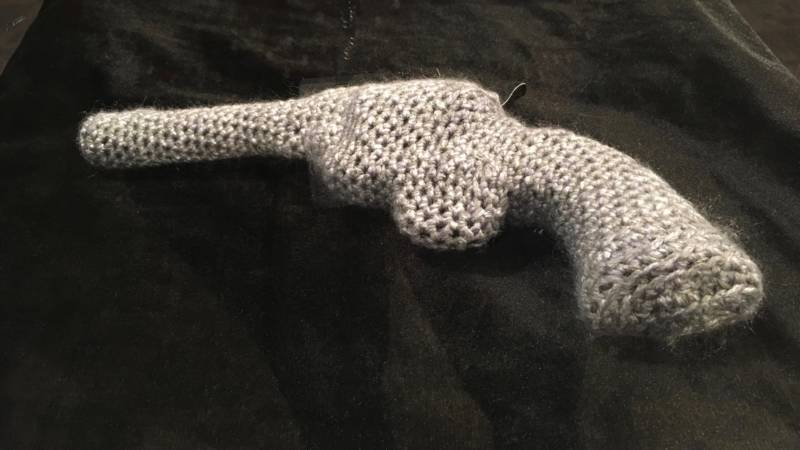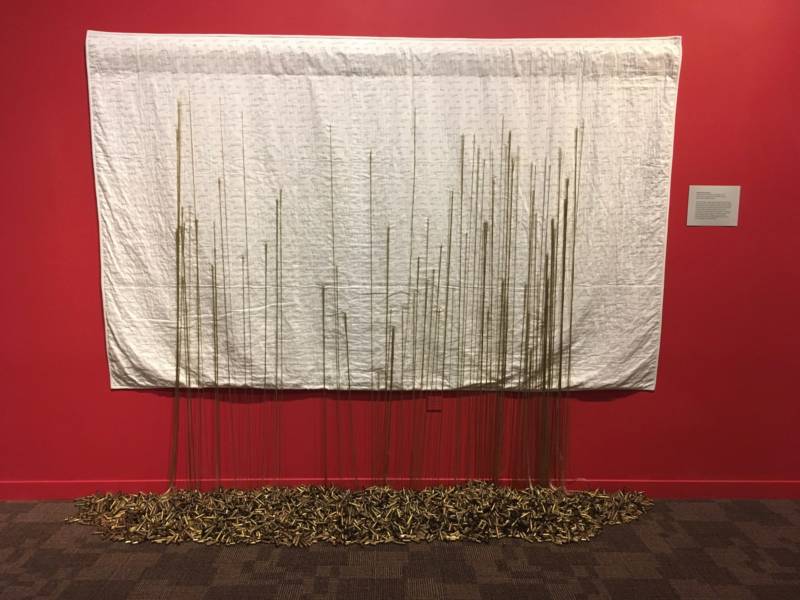You’ve got one more week to check out Guns: Loaded Conversations at the San Jose Museum of Quilts and Textiles. So go!
Few issues are so polarizing politically, but as the number of mass shootings mount, artists across the country are taking to their studios to comment, persuade and provoke.
“I had to use my platform as a curator,” says Amy DiPlacido, who says one of her first priorities upon getting the job in San Jose was to do something in response to the shootings at Pulse, a nightclub in Orlando, Florida, which left 49 dead and 53 wounded in 2016. But really, take your pick from a host of mass shootings before and after that.
DiPlacido collaborated with the nonprofit Studio Art Quilt Associates, adding local, Bay Area contributions to this international traveling exhibition addressing gun violence. The result is a comprehensive survey of emotion and politics in more than 40 works of textile art.
Most people think of quilts as folksy bed linens, but textile art has been political from the get-go. Think of Betsy Ross. Quilts were sold in the early 19th century to raise funds for the abolitionist movement. More recently, gay rights activist Cleve Jones conceived of the AIDS Memorial Quilt in the mid-1980s.

It’s hard to pick which piece is most affecting. For me, it might be Noelle Mason‘s “Nothing Much Happened Today (for Eric and Dylan),” a landscape-sized cross-stitch embroidery version of a still from security footage of the Columbine High School Massacre.




